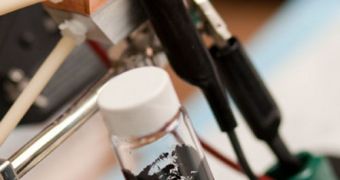In an move that could see the widespread adoption of electric vehicles finally taking place, experts in the United States were recently able to create a new battery design. They say that the innovation could finally allow electric vehicles to have the range and speed people expect of them.
Researchers at the Massachusetts Institute of Technology (MIT) say that the alternative is extremely lightweight and cheap to manufacture, which means that it could make its way into the market soon.
The new batteries could also be used to augment the functioning of power grids, experts say. They can be recharged extremely fast, in roughly the same time it takes for people to put gas in the fuel tanks on their conventional cars.
MIT scientists say that the new technology is called a semi-solid flow cell, which is an innovative architecture, featuring solid particles being pumped through the system. The solids are suspended inside a carrier liquid, which the pumps move.
The battery's cathode and anode – its active components – are made up of the same solid particles, suspended in a liquid electrolytes. The two flows are separated by a thin porous membrane, or some other type of filter, the team says.
Researchers say that one of the most innovative features of the new device is the fact that the two functions of each battery – storage and release – are being separated in two physically-distinct areas of the battery. This contributes to increased efficiency.
“The demonstration of a semi-solid lithium-ion battery is a major breakthrough that shows that slurry-type active materials can be used for storing electrical energy. [This] has tremendous importance for the future of energy production and storage,” says Yury Gogotsi.
The expert holds an appointment as a Distinguished University Professor at the Drexel University, where he is the director of the Drexel Nanotechnology Institute. He was not a part of the study.
“I don’t see fundamental problems that cannot be addressed – those are primarily engineering issues. Of course, developing working systems that can compete with currently available batteries in terms of cost and performance may take years,” he adds.
But the challenges are insurmountably-difficult, the expert believes. As soon as better materials become available, improving this architecture will only be a matter of time.
The US Department of Defense’s (DOE) Defense Advanced Research Projects Agency (DARPA) and the Advanced Research Projects Agency – Energy (ARPA-E) funded the work. The two organizations will fund MIT for another two years in this research.

 14 DAY TRIAL //
14 DAY TRIAL //